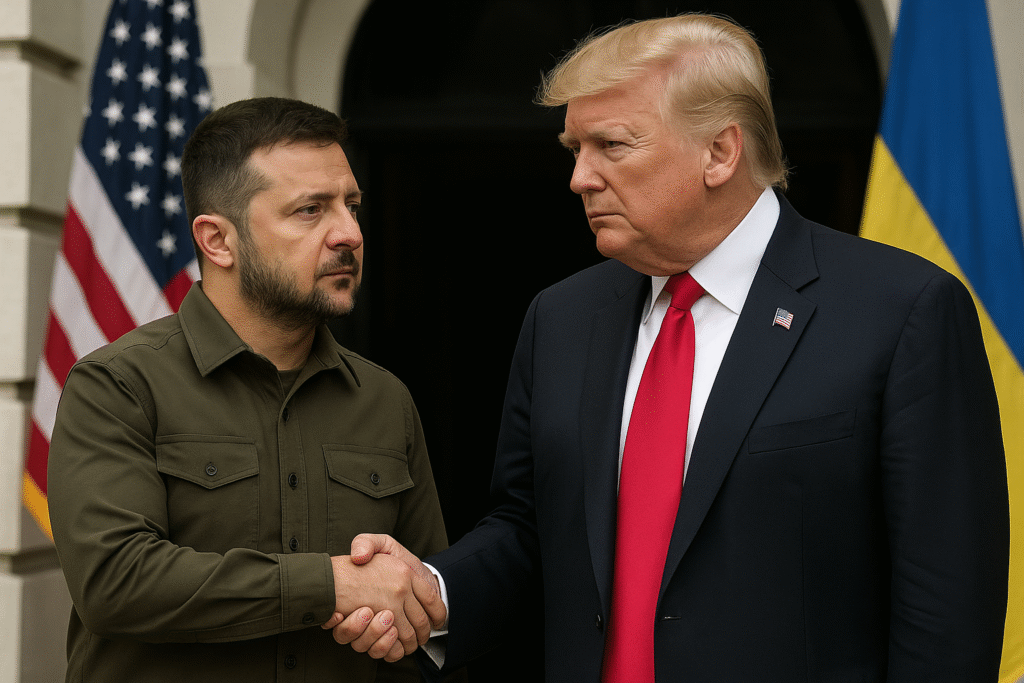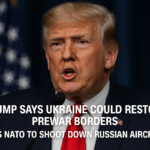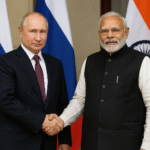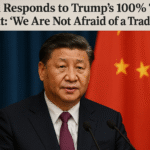By Harshit, Washington, D.C. | October 17, 2025 6 AM EDT
Ukrainian President Volodymyr Zelensky will meet with U.S. President Donald Trump in Washington on Friday, amid discussions over whether to provide Ukraine with Tomahawk cruise missiles, capable of striking deep into Russian territory. The meeting comes a day after Trump described a “productive” phone call with Russian President Vladimir Putin, during which the two leaders agreed to hold face-to-face talks in Hungary.
Trump characterized the August 2025 call with Putin as a major step forward, noting that high-level delegations from both countries would meet next week to discuss trade and other strategic issues. Zelensky, on his third visit to the United States since January, remarked that Moscow was eager to resume dialogue once the potential delivery of Tomahawks to Kyiv became known.
Tomahawk Missiles and U.S. Stockpile Concerns
Zelensky has repeatedly called on the U.S. to supply Ukraine with long-range Tomahawk missiles, which have an operational range of 2,500 km (1,500 miles). These weapons could potentially allow Ukrainian forces to strike strategic Russian targets far beyond the frontlines.
Trump, however, has signaled caution. When asked about the potential delivery of Tomahawks, he stated, “We can’t deplete our stockpile… we need them too. So I don’t know what we can do about that.” U.S. military officials have noted that Ukraine currently lacks the naval platforms and launchers necessary to operate these missiles, and the U.S. possesses only a limited number of Typhon land-based mobile launchers, which entered service in 2023 after the INF Treaty restrictions were lifted.
Trump-Putin Dialogue and Peace Talks
Writing on social media, Trump said he and Putin discussed trade relations post-conflict, adding that the U.S. delegation would be led by Secretary of State Marco Rubio. Trump indicated he would brief Zelensky on the outcomes of his call, emphasizing that “great progress was made.” He also projected a face-to-face meeting with Putin in Hungary within two weeks, though details remain unconfirmed.
Hungarian Prime Minister Viktor Orban described the planned meeting in Budapest as “great news for the peace-loving people of the world” and stressed that dialogue, rather than confrontation, is essential for regional stability. Orban also criticized the European Union’s stance, arguing that Europe’s approach of escalating tensions instead of negotiating is counterproductive.
Russia’s Response and Continued Hostilities
The call between Trump and Putin coincided with one of Russia’s largest attacks on Ukraine in 2025, involving 28 ballistic missiles and over 320 drones, according to Ukrainian Ambassador Olga Stefanishyna. Stefanishyna said the strikes highlighted Russia’s “strategy of terror and exhaustion” and called for reinforced sanctions, strengthened air defenses, and long-range weapons for Ukraine.
Kremlin spokesman Dmitry Peskov warned that supplying Tomahawks to Ukraine would constitute a major escalation, reflecting Moscow’s deep concern over long-range missile capabilities in Ukrainian hands.
Shifts in Trump’s Ukraine Policy
Trump’s stance on Ukraine has evolved over the past year. While initially seen as more sympathetic toward Russia than his predecessor, he has recently signaled stronger support for Kyiv. In September, he suggested Ukraine could retake all territory currently occupied by Russia, marking a significant shift from earlier statements advocating concessions.
Trump’s relations with Zelensky were strained earlier this year, notably on February 28, when he and Vice President JD Vance publicly criticized the Ukrainian president in the Oval Office. However, ties have improved in recent months, with both sides emphasizing dialogue and strategic coordination.
Geopolitical and Strategic Implications
The discussions over Tomahawk missiles, combined with Trump’s upcoming meeting with Zelensky and planned talks with Putin, underscore the high-stakes nature of U.S. involvement in the Ukraine conflict. Analysts suggest that providing long-range missiles could reshape military dynamics in the region, while also heightening tensions between Washington and Moscow.
Trump’s outreach to Putin, alongside the consideration of advanced weaponry for Kyiv, reflects a dual strategy: applying diplomatic pressure on Moscow while reinforcing Ukraine’s defensive and offensive capabilities. The administration has also sought to limit Russian energy revenue by encouraging countries such as India, China, and NATO members to curb purchases of Russian oil, though some claims have been disputed by foreign governments.
Conclusion
As Zelensky arrives in Washington, both leaders face a complex set of strategic and diplomatic decisions. The possibility of supplying Tomahawk missiles to Ukraine, coupled with ongoing U.S.-Russia dialogue and escalating Russian attacks, illustrates the delicate balance of deterrence, diplomacy, and military support. The outcome of Friday’s meeting could shape the trajectory of the Ukraine conflict and broader geopolitical stability in Europe.







